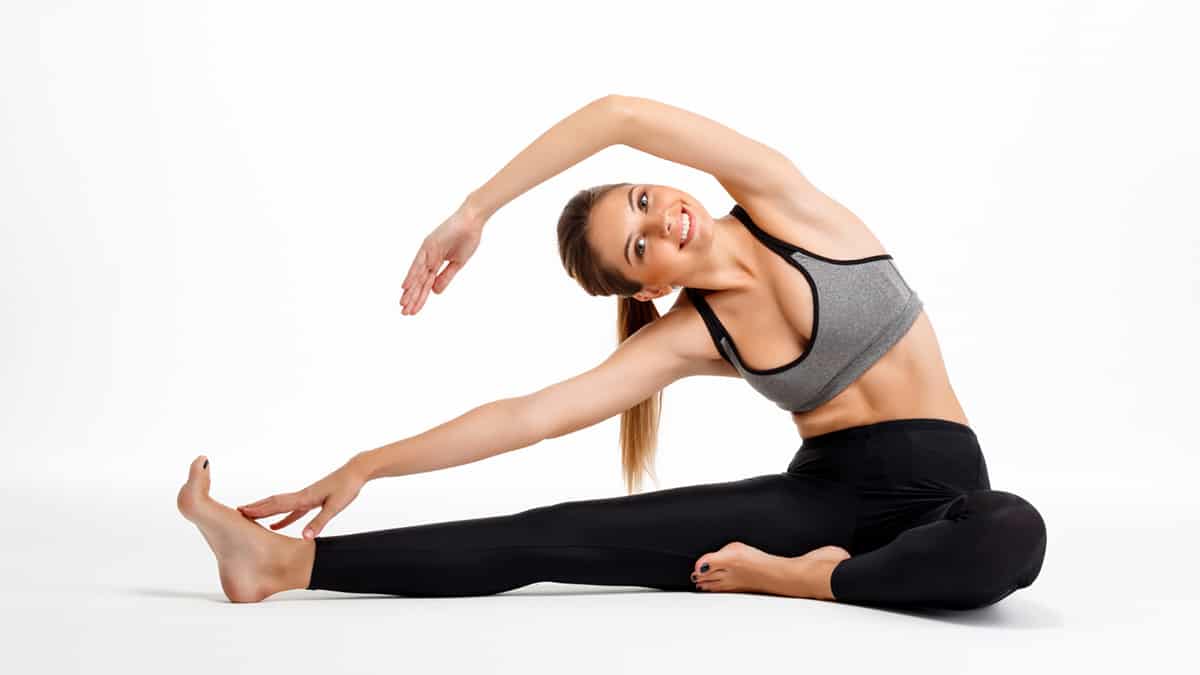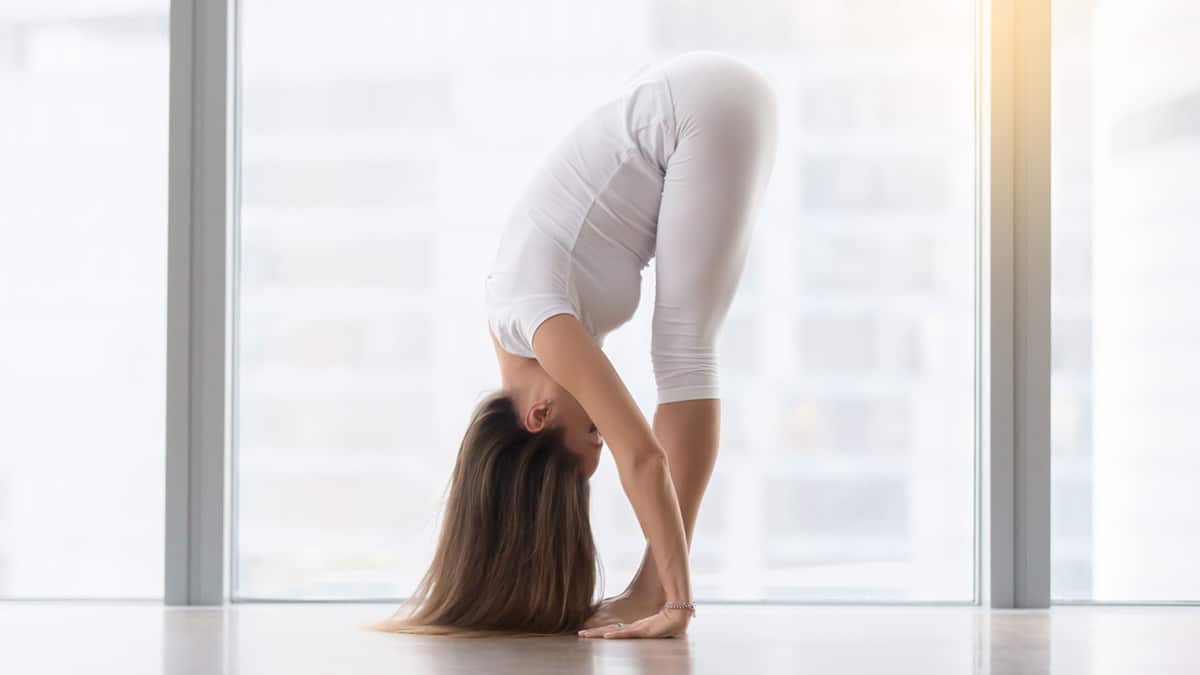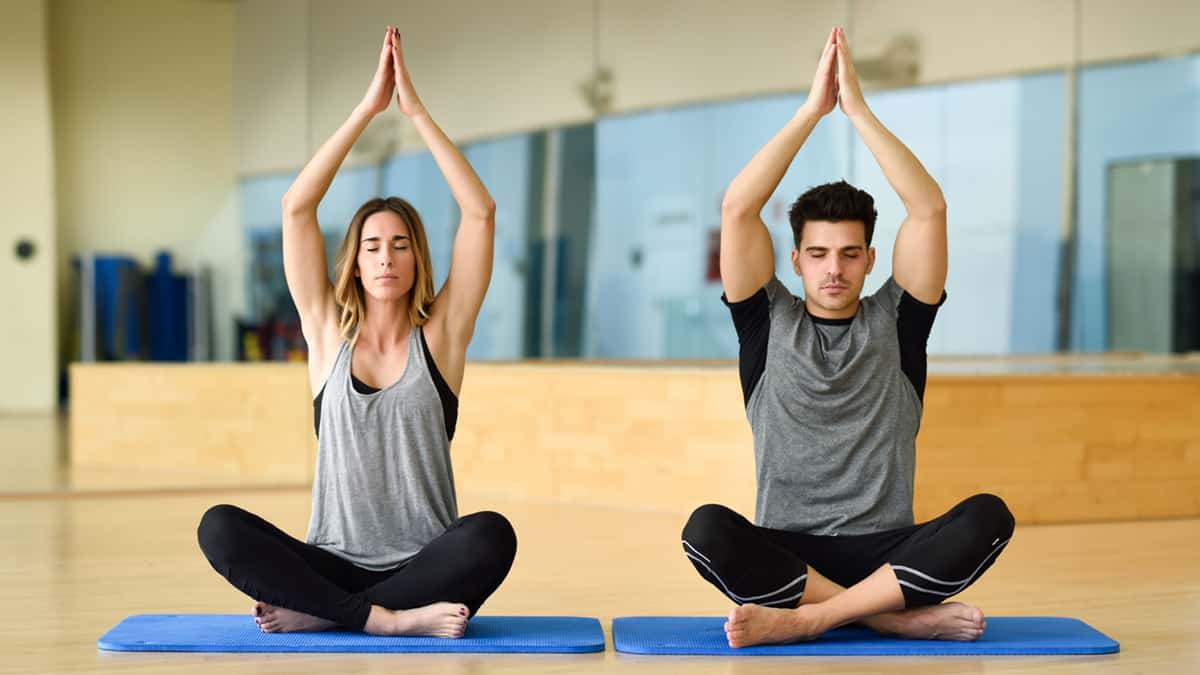The Importance and Benefits of Stretching Your Body
Physical Health

All forms of physical activity can boost your physical and mental health, but each type may provide slightly different benefits.
Stretching can be done anywhere, at any time. It doesn't require special equipment or expensive classes. Furthermore, you can easily adapt stretching exercises to match your physical abilities and daily routine. In short, stretching is a great way for beginners to increase their activity levels, start a new exercise habit, and improve their health.
Stretching's Health Benefits
Regular stretching can improve the health of your muscles and other tissues within your body. It may also help strengthen your mental and emotional health .
Physical Benefits of Stretching
Stretching impacts the way blood moves around your body. This is important because blood plays many important roles within your body, including:
- Carrying oxygen to all of your cells
- Transporting nutrients to different tissues
- Controlling your body temperature
- Removing waste products from cells
- Helping to fight infection
During stretching exercises, more blood travels to your muscles in the parts of your body that are being stretched. Unexpectedly, research has found that stretching also increases blood flow in other parts of your body. In other words, stretching helps blood, oxygen, and nutrients better reach all of the tissues in your body.
Stretching may keep your heart healthy, especially if you have high blood pressure . It lowers your blood pressure levels to an even greater extent than aerobic exercise. This can have long-lasting impacts on your health — high blood pressure increases your risk of experiencing a heart attack, stroke, heart disease, and kidney disease; therefore, regular stretching may help protect you from chronic health conditions.
When you engage in a regular stretching routine, you will also grow more flexible . This can help you bend your joints in a healthy way, improve the ability of your muscles to move, and boost your sports or exercise performance.
When older adults use stretching to improve flexibility and balance, they may also have a lower risk of falls that can cause significant health problems or disability.
Mental Benefits of Stretching
Research has found that regular stretching practices such as yoga can offer many mental benefits . They may help you:
- Think more clearly
- Improve your ability to focus and concentrate
- Work through mental problems or challenges more quickly
- More easily remember things
Stretching may help flip a "switch" in your brain that controls your thinking processes. It can activate your parasympathetic nervous system , which makes your heart beat more slowly, encourages you to take deeper, calmer breaths, and helps your body digest food . This system acts as the opposite of the fight-or-flight response that takes over when you are in danger or feeling very stressed. In other words, stretching helps your body relax while keeping your mind sharp.
Creating a Stretching Habit
You're more likely to successfully form a new habit when you tie the action to your existing routine . Think about when in your day stretching might be most helpful for you. For example, you may decide to stretch:
- First thing in the morning after you get out of bed to warm up your muscles
- Mid-afternoon at your desk to give yourself a brief break from work
- At the end of the day to help your body relax
You also have a greater chance of sticking with a habit when you start small . If you aren't currently used to stretching, don't immediately try to perform an elaborate 30-minute stretching routine every day — you'll probably drop the habit quickly. A stretching habit will seem much more achievable if you know it's only going to take a couple of minutes.
Try choosing three or four stretches that sound appealing to you, and focus on just those stretches for a couple of weeks. If you keep up your new routine, gradually add more stretches or other activities.
Stretches To Try

Deciding where and when you want to stretch may help dictate which type of stretches you want to do. You may also want to consider what feels best to your body — don't attempt any stretches that cause pain or make you feel like you're pulling too hard. Listen to your body and do the stretches that feel best to you.
Standing Stretches
A lot of basic stretches can be accomplished when you're standing tall. Make sure to keep your feet about hip-width apart and use your core muscles in your abdomen and back to keep you steady as you move.
Hamstring stretch — This movement stretches out your hamstrings (muscles in the back of your thighs) as well as muscles throughout your back, hips, and legs.
- Stand up straight.
- Bend at your hips, allowing your arms and head to fall forward toward your toes.
- Keep your knees slightly bent and use your hands to grab your feet, shins, or knees — wherever feels comfortable and produces a slight stretch in your legs and back. Hold in place.
Quadricep stretch — Use this action to stretch out the muscles at the front of your thighs, called the quadriceps or quads.
- Start by standing tall.
- Kick up your right foot behind you, toward your buttocks.
- Reach down with your right hand and grab your right foot, slightly pulling it upwards.
- Repeat on the other side.
Calf stretch — This stretch targets your calves (the muscles found at the back of your lower legs, on the opposite side of your shins).
- Stand facing a wall and place your palms flat on the surface.
- While bending your left knee, step your right leg back behind your body and relax your right heel toward the floor.
- Hold and then repeat with your left leg.
Seated Stretches
Stretching while sitting down may be a great way to ease into an exercise routine if your joints prevent you from being able to easily balance and move around while standing. Additionally, performing seated stretches throughout your workday can improve blood flow, boost your mental capabilities, and wake you up.
Side stretch — Use this stretch to relax the muscles in your shoulders, neck, and sides of your torso.
- Sit up straight with both feet on the ground.
- Drop your right hand toward the ground.
- Reach your left arm over your head and to the right as you slowly pull your upper body toward your right side. Make sure your left hip is still firmly pressing down on your seat.
- Hold, then repeat on the other side.
Spinal twist — This action can help stretch out your spine and the muscles throughout the sides of your body.
- Sit up tall in your seat.
- While breathing in deeply, start to twist your body toward the right.
- Grab the side or back of your chair and gently continue twisting as you exhale.
- Perform the move again on the opposite side.
Shoulder stretch — This motion is perfect for stretching out your shoulders and triceps (the muscles at the backs of your arms).
- Sit up straight with your shoulders pulled back and your shoulder blades gently pulled down towards the ground.
- Move your right arm across your body so that your hand is pointing to the left. Your arm should be parallel to the floor.
- With your left hand, gently pull your arm closer to your chest.
- Hold and then repeat with your left arm.
Stretching on the Ground
To attempt these stretches, find a comfortable area on your floor that contains enough space for you to move around. It may help to lay down a yoga mat, bath towel, or blanket to provide extra cushioning. Alternatively, do these stretches in bed when you first wake up or before you fall asleep.
Knee to chest — This stretch helps ease tension in your lower back, hips, and buttocks.
- Lay down on your back with your arms at your sides.
- Bend your right knee and bring it up toward your chest.
- Reach out with your hands and hold your knee in place while keeping your left leg stretched out in front of you.
- Repeat on the other side.
Cat-cow — This yoga move stretches your abdominal muscles and back.
- Get onto all fours with your knees underneath your hips and your wrists underneath your shoulders. Make sure your shoulders aren't hunched up toward your ears.
- As you slowly inhale, drop your spine down toward the ground and look forward or up to stretch out muscles near your stomach.
- As you gradually exhale, round your spine upward, pull in your navel toward your spine, and shift your gaze toward your knees or navel to stretch your back muscles.
- Repeat five times.
Child's pose — Another yoga pose, the child's pose helps to stretch your spine, hips, hamstrings, arms, and shoulders.
- Kneel with your glutes sitting on your heels. Keep your knees hip-width apart or spread them out wide based on what feels best to you.
- Bend your hips and move your upper body forward, toward the ground.
- Keep your chest near your thighs, rest your forehead on the ground, and reach your arms out in front of you with your palms touching the ground.
- Hold the pose, relaxing your shoulders and letting them fall downward as much as is comfortable.
Finding Other Ways To Stretch

If you're ready to expand your stretching routine, there are many other resources available to help you discover more stretches. You may want to try:
- The Mayo Clinic's Guide to Basic Stretches
- A collection of 25 beginner stretches with animated how-to photos from Greatist
- Flexibility-boosting stretches from Self magazine
- Free stretching videos on YouTube such as this 8-minute beginner routine , this set of stretches for back pain , this routine for your neck and shoulders , or these stretches you can do at your desk
- Smartphone apps geared toward stretching
Some activities, such as yoga, tai chi, and Pilates combine stretching with other components , such as strength-building exercises, meditation, or deep breathing. You may get even more mind and body benefits from these activities.
If you have a hard time sticking with stretching or you feel like you're not sure what to do, you may find it helpful to receive guidance from experts. You may be able to take a stretching or yoga class at a local gym, YMCA, or community center. You may also be able to work with a personal trainer who can come up with a stretching routine that matches your individual needs.
If you are interested in stretching because you want to heal a specific problem or injury, it may be best to try physical therapy . During this treatment, a physical therapist will lead you through activities — including stretches — that increase flexibility and build strength. Physical therapy may help if you're struggling with arthritis, muscle sprains or strains, back pain, or other ailments.
Staying Safe While Stretching
Stretching may feel like a gentle, simple activity, but that doesn't mean that it is always safe. Pushing your body too far can cause injury. Taking steps to stretch safely can help ensure that the benefits of stretching outweigh the risks.
Make sure to warm up before you stretch . This may sound like odd advice, given that many people use stretching as a warm-up for other activities. However, pulling on your muscles when they're cold and not ready to move can cause injury. Try walking or doing jumping jacks for five minutes before stretching to get your heart pumping faster.
Try to hit all of your major muscle groups while stretching. You should be stretching muscles on both the front and back of your legs. Also try to stretch out muscles in your neck, shoulders, arms, and back on both sides of your body. If your stretching is imbalanced and you concentrate more on some areas than others, you could raise your risk of injury.
Take your time — stretching is a slow process. You'll want to hold each stretch for about 30 seconds without bouncing. Breathe deeply throughout this process. Additionally, keep in mind that you won't see results right away. The benefits of stretching come from building a routine over the course of weeks or months.
Above all, keep in mind that stretching should not be painful . Pulling on your limbs and joints to the point of pain will only cause you to get injured. If you feel like you may have already strained a muscle, don't stretch it further.
As with any type of physical activity, talk to your doctor before beginning a new routine. Your doctor understands your personal health characteristics and can help you understand which moves may be the most safe and beneficial for your needs. For example, you may need to avoid certain stretches if you have an existing injury .
Conclusion
You can easily perform all sorts of stretches that can improve your body and mind. Stretching can also provide a solid foundation that you can build upon with other types of exercises. Talk to your healthcare team to make sure you are staying safe while stretching.